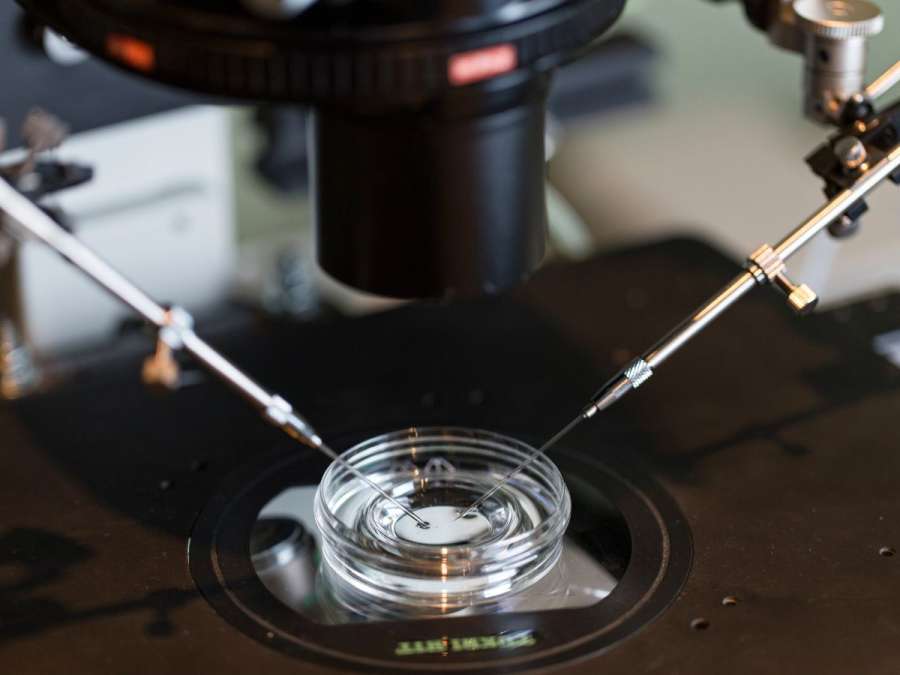Many factors must be considered when understanding fertility and optimizing your chances of conception. A critical aspect of a woman’s reproductive health is her cervical mucus. Cervical mucus plays a crucial role in the fertility journey, and understanding its changes throughout the menstrual cycle can benefit those trying to conceive. In this article, we will look into the depths of cervical mucus and its connection to fertility, exploring its characteristics, changes, and significance in reproductive health.
It is really important to grasp the subtle but informative signals from your body when it comes to understanding the intricate paths of fertility. Cervical mucus is one such sign that is commonly disregarded but is quite informative. This natural secretion functions as a biological barometer, giving information about a woman’s fertility cycle due to the variety of textures and consistencies it contains. Women can develop an understanding of their most fertile windows, assisting in conception efforts or using natural birth control measures, by observing and interpreting these changes. This article aims to empower women with knowledge, promote a closer relationship with their bodies, and enable informed reproductive decisions rather than just tracking fertility.
1. What is Cervical Mucus?
Cervical mucus, also known as cervical fluid, is a substance secreted by the cervix, the lower part of the uterus. The cervix produces mucus throughout a woman’s menstrual cycle, and its characteristics change in response to hormonal fluctuations. Cervical mucus serves several essential functions in the reproductive system. This includes protecting and nourishing sperm, encouraging their journey through the reproductive tract, and serving as a potential indicator of fertility.
2. The Menstrual Cycle and Cervical Mucus

To understand the connection between cervical mucus and fertility, it is essential to have a basic understanding of the menstrual cycle. The menstrual cycle typically lasts about 28 days, although it can vary from person to person. It is divided into several phases, including the follicular, ovulation, and luteal phases.
During the follicular phase in the first half of the menstrual cycle, follicle-stimulating hormone (FSH) stimulates the ovaries to develop follicles, each containing an egg. As the hairs grow, they produce estrogen, which signals the cervix to produce cervical mucus. The characteristics of cervical mucus during this phase are typically thick, sticky, and opaque. It creates a barrier that helps prevent sperm from entering the uterus and protects against bacteria.
Ovulation is a crucial event in the menstrual cycle, marked by the release of a mature egg from the ovary. The luteinizing hormone (LH) flow triggers ovulation, usually around the 14th day of a 28-day cycle. As ovulation approaches, peaking estrogen levels cause a change in the consistency and appearance of cervical mucus. This fertile cervical mucus, also known as “egg white” cervical mucus, is clear, slippery, and stretchy. Its purpose is to help the passage of sperm through the cervix and into the uterus, enhancing the chances of fertilization.
Following ovulation, the luteal phase begins. During this phase, the ruptured follicle transforms into a structure called the corpus luteum, which produces progesterone. Progesterone causes the cervical mucus to become thicker and less favourable for sperm survival. If fertilization does not occur, progesterone levels drop, and the menstrual cycle begins anew.
3. Cervical Mucus and Fertility Awareness
Monitoring changes in cervical mucus can be invaluable for couples trying to conceive. By tracking the characteristics of cervical mucus throughout the menstrual cycle, individuals can identify their fertile window—the period when conception is most likely to occur. Understanding the changes in cervical mucus can help optimize the timing of intercourse to maximize the chances of fertilization.

You can use several methods to observe and track cervical mucus. The most common approach is the Billings Ovulation or the cervical mucus or ovulation method. This method involves observing and recording the changes in cervical mucus daily, categorizing it into different types based on consistency and appearance. Individuals can pinpoint their most fertile days by analyzing these patterns over time.
Another method is the Two-Day Method, which focuses on the sensation of dryness or wetness in the vaginal area. Individuals using this method consider themselves fertile if they observe cervical mucus or feel the water on a given day and the day before.
4. Link to Infertility
For some individuals and couples, difficulties in conceiving may be associated with issues with cervical mucus. Various factors can affect the production and quality of cervical mucus, thereby hindering sperm transport and fertilization.
One condition that can impact cervical mucus is hostile cervical mucus. Hostile cervical mucus refers to mucus that is not favourable for sperm survival or mobility. Hormonal imbalances, infections, or certain medications can cause it. In such cases, seeking medical advice from a doctor or fertility specialist is crucial. It can help identify the underlying cause and explore potential treatment options.

Treatment options for individuals with hostile cervical mucus may include hormonal interventions to correct imbalances, medications to address infections, or assisted reproductive technologies like intrauterine insemination (IUI) or in vitro fertilization (IVF). These treatments aim to bypass the cervical mucus or address the underlying factors contributing to its hostility.
If you’re trying to have a baby, it’s crucial to know about cervical mucus and how it is tied to fertility. Monitoring changes in cervical mucus throughout the menstrual cycle can provide valuable insights into the timing of intercourse and increase the chances of successful fertilization. By becoming familiar with the characteristics and patterns of cervical mucus, individuals can gain knowledge to optimize their reproductive health and increase their chances of conception. However, it is essential to note that fertility is a complex interplay of various factors. If fertility concerns arise, seeking professional guidance from a doctor or fertility specialist is crucial to receiving appropriate care and support.
